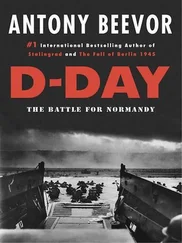This explanation certainly takes into account the psychology of a cavalry regiment on the verge of a charge. Excitement, expectation, pumping adrenalin, keenness not to be seen as hanging back, a culture of élan and esprit de corps that prizes action over contemplation, all might have played their part. Above all it is not impossible to imagine a situation in which horses start to move forward to restore an alignment, in the process encouraging the belief that the order to charge had been given.
Whatever the true explanation — and it might even have been that Ney did not think infantry support necessary — General le Comte Milhaud’s IV Cavalry Corps set off on their doomed charge towards the Anglo-Allied infantry, with Ney at their head. Seeing Milhaud’s cuirassiers attack, the cavalry general Charles Lefebvre-Desnoëttes followed on without direct orders; by the time the force crossed over to the west side of the Charleroi—Brussels road it numbered forty-three squadrons of heavy cavalry, comprising about 5,000 men and horses.
It must have been an astonishing sight. As Shaw Kennedy, who watched the deployment take place, readily admitted:
The formation and advance of that magnificent and highly disciplined cavalry had, as a spectacle, a very grand effect. These splendid horsemen were enthusiastic in the cause of Napoleon — full of confidence in him and in themselves — thirsting to avenge the reverses which had been suffered by the French armies — led by most experienced and able cavalry commanders — and they submitted to a rigid discipline. Their advance to the attack was splendid and interesting in the extreme. 3
Yet despite the formidable size of Ney’s formation, Napoleon had apparently still not seen it, and therefore did nothing to prevent its deployment. Wellington had seen it however, and considered it premature, and his infantry had plenty of time to take the necessary defensive steps. Since Ney had to charge between Hougoumont and La Haye Sainte, avoiding both as far as possible to escape their enfilading fire, he could not ride on as broad a front as he would have liked. When he reached the Anglo-Allied lines he found they had altered shape. They had ‘formed square’.
Horses will refuse to charge straight at a body of men who are pointing bayonets at them. This is the equine fact underlying the thinking behind the defensive formation known as ‘the square’. That, and the sense of safety that the men inside squares could take from the knowledge that their backs were protected by their comrades. Hollow or solid, squares were actually often rectangular or even triangular in shape, and at Waterloo several of the thirteen or fourteen were actually oblong, but the generic title still holds.
Squares were not utterly unbreakable by cavalry, but in the Napoleonic Wars there were only a few occasions when they had not proved impregnable. At the battle of Garcia Hernandez in July 1812 during the Peninsular War, two French squares were broken by the 1st and 2nd Dragoons of the King’s erman Legion on a single day. The wounded horse of a trooper named Post in the latter regiment reared up and then rolled, kicking and bucking, onto the wall of Frenchmen in the front rank of the square, opening a momentary gap. This was suddenly filled with dragoons, who broke into the square.
If a square gives security because everyone’s back is covered, the moment enemy cavalry get inside it the exact opposite is the case: it becomes a death-trap for infantrymen because every back is left undefended to the horsemen’s sabre thrusts. The square adopted by a battalion of the French 76th Regiment of the Line at Garcia Hernandez simply collapsed, with most men surrendering, many being killed and only fifty escaping. Nor did it end there. Soon afterwards a second French square, formed by the other battalion of the 76th, also broke because its cohesion was wrecked by refugees from other parts of the battlefield trying to flood into it, just as the German dragoons fell upon it. 4
Fortunately at Waterloo the Anglo-Allied squares had plenty of time to form up before Milhaud’s cuirassiers appeared. Shaw Kennedy remarked of the attack:
We had no idea that it would be made upon our line … as yet unshaken by any previous attack by infantry. The moment that it was observed that the movement of the great masses of the French heavy cavalry were directed towards his division, [Major-]General [Charles von] Alten passed the order to form oblongs, into which formation the division rapidly passed; the Guards formed squares on the right of the 3rd Division; the two divisions thus filling up the space between the Charleroi and Nivelles roads; the artillery stood in front of the infantry on the front slope of the position, so that its fire might be effectual against the attacking force.
It was indeed murderously effective, as was the entire deployment, because it allowed many muskets to be brought to bear on the cavalry, without the troops being in too much danger themselves. Squares were highly vulnerable to coordinated attack from cannon and infantry, because the square becomes a solid target of men unable to move because of the presence of cavalry. Yet Ney had launched his assault without the close support of infantry, and only six of the eleven batteries in support were the manoeuvrable horse-battery kind, further indication that the charge might have started accidentally and only been acquiesced in once it had begun. Napoleon is also quoted, whether accurately or not, as saying: ‘This attack has taken place an hour too soon, but we must stand by what has already been done.’ 5Consequently the Emperor ordered General Kellermann to support Ney with his four brigades of cuirassiers and carabiniers, and also Guyot’s heavy cavalry of the Guard, totalling thirty-seven squadrons to add to the forty-three already committed.
Private Charles O’Neil recorded how the British squares were ‘not quite solid, but several files deep, and arranged like the squares of a chess-board; so that, if any of the enemy’s cavalry should push between the divisions, they could be attacked in the rear, as well as in the front’. 6This formation also had the advantage that the fewest number of stray shots from one square that missed the French cavalry would strike infantrymen in a nearby square. Armed with muskets whose fire was only 5 per cent accurate much beyond ten yards, this was no small advantage in an age that suffered greatly from ‘friendly-fire’ incidents.
The experience of being attacked by the French cavalry was something Ensign Gronow, who was serving with the 1st Foot Guards, would never forget. In his superb Reminiscences, he recalled being in the same square as Wellington as the enemy cavalry descended:
You perceived at a distance what appeared to be an overwhelming, long moving line, which, ever-advancing, glittered like a stormy wave of the sea when it catches the sunlight. On came the mounted host until they got near enough, whilst the very earth seemed to vibrate under their thundering tramp. One might suppose that nothing could have resisted the shock of this terrible moving mass … In an almost incredibly short period they were within twenty yards of us, shouting ‘ Vive l’Empereur!’ The word of command, ‘Prepare to receive cavalry,’ had been given, every man in the front rank knelt, and a wall bristling with steel, held together by steady hands, presented itself to the infuriated cuirassiers … Our Commander-in-chief, as far as I could judge, appeared perfectly composed; but looked very thoughtful and pale. 7
Although eighty squadrons of heavy cavalry were now ranged against the Anglo-Allied squares, Napoleon refused to send in the Imperial Guard infantry, which he always preferred to keep back until the last moment, when they had so often in the past decided battles in his favour. There was even a joke among the French line infantry that the reason the Imperial Guard were nicknamed ‘the Immortals’ was because they were committed so late in the day. Not only were the heavy cavalry not supported by infantry, they were not followed up by any more than six batteries of horse artillery. In the opinion of Captain Becke: ‘Had guns been galloped up in the wake of the cavalry, and commenced a case-shot attack of the squares … then nothing could have saved the centre of Wellington’s line from being torn to pieces and breached.’ 8
Читать дальше
Конец ознакомительного отрывка
Купить книгу











